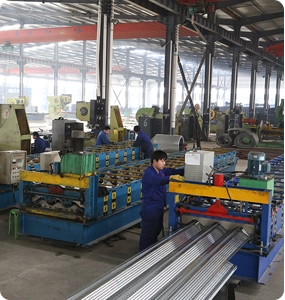The Importance of Emergency Fences in Community Safety
In today's increasingly unpredictable world, communities are facing various challenges that threaten safety and security. One often overlooked solution to these issues is the implementation of emergency fences. These structures serve as a first line of defense in protecting both people and property during emergencies, be it natural disasters, civil unrest, or unwanted animal intrusions.
Emergency fences are specifically designed to be quickly deployed in times of crisis. Unlike traditional fencing, which is often permanent and requires significant time and effort to install, emergency fencing can usually be set up in a matter of hours. This quick installation is invaluable during situations like natural disasters—such as hurricanes or floods—where timely responses can mitigate damage and save lives.
One of the primary functions of emergency fencing is to create secure barriers around dangerous areas. For instance, after a severe storm, there may be downed power lines or hazardous debris strewn about. Emergency fences can block off these areas, preventing individuals from inadvertently wandering into harm’s way. Moreover, during situations of civil disturbance, emergency fences can be employed to control crowds, directing the flow of people and maintaining order.
emergency fence

In agricultural settings, emergency fences play a crucial role in protecting livestock and crops. During an emergency, such as a wildfire, animals can become stressed and attempt to flee. Emergency fencing can keep livestock contained, ensuring they remain safe and reducing the risk of them escaping into dangerous areas. Additionally, in the event of a flood, temporary fencing can help protect vital agricultural resources from rising waters, safeguarding local food supplies.
Moreover, the psychological effect of emergency fences should not be underestimated. Knowing that there are safeguards in place can provide a sense of security for residents in a community. During times of uncertainty, feeling protected can greatly reduce anxiety and stress. Emergency fences also foster a collective sense of responsibility within a community, encouraging residents to come together to assist in their installation and maintenance.
However, it is essential to balance the necessity of emergency fencing with considerations for accessibility and the natural environment. In some cases, overly aggressive fencing can disrupt wildlife migration patterns or limit access to public spaces. Therefore, it is crucial to collaborate with environmental specialists and community planners to design solutions that protect both human safety and ecological integrity.
In conclusion, emergency fences are a vital tool in enhancing community safety. They provide immediate protection during crises, safeguard valuable resources, and offer psychological reassurance to residents. As communities continue to navigate the complexities of modern threats, the role of emergency fences will undoubtedly become more prominent. They embody the first step towards resilience, allowing communities to respond swiftly to emergencies and ensure the safety of all their members. As such, proactive measures should be taken to explore innovative designs and strategies for emergency fencing, ultimately paving the way for safer and more secure neighborhoods.
-
Why Galvanized Trench Cover Steel Grating Resists Corrosion
NewsJul.10,2025
-
The Versatility and Strength of Stainless Expanded Metal Mesh
NewsJul.10,2025
-
Load Calculations in Steel Grating Platforms
NewsJul.10,2025
-
Keeping Pets and Kids Safe with Chicken Wire Deck Railing
NewsJul.10,2025
-
Hole Diameter and Pitch for Round Perforated Metal Sheets
NewsJul.10,2025
-
Aluminium Diamond Mesh in Modern Architecture
NewsJul.10,2025
Subscribe now!
Stay up to date with the latest on Fry Steeland industry news.

